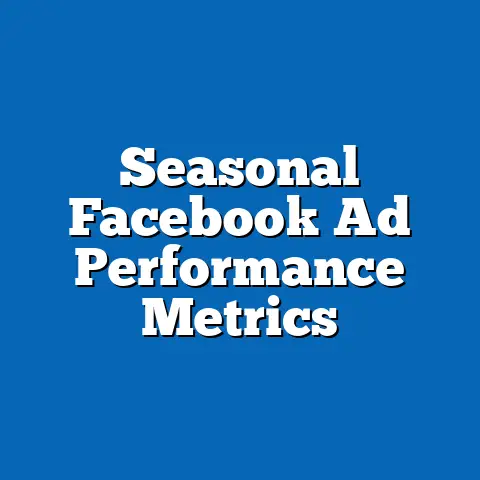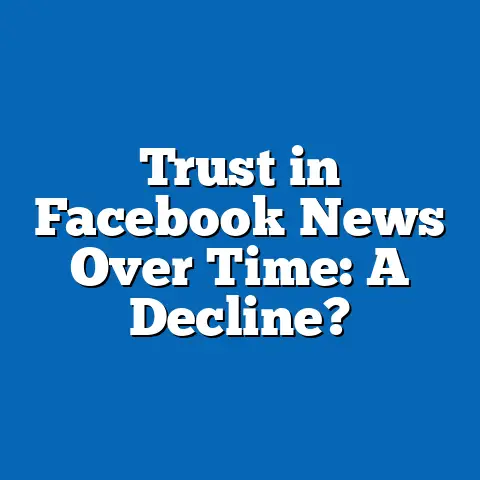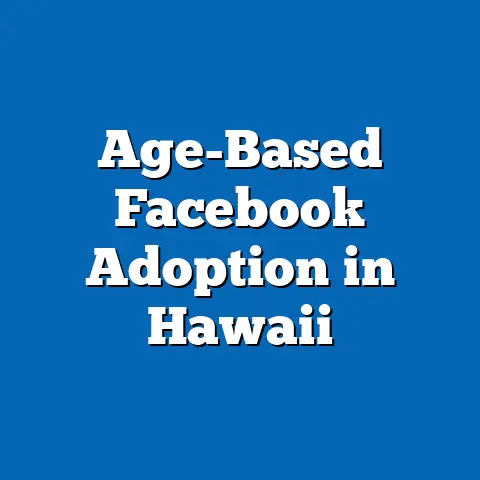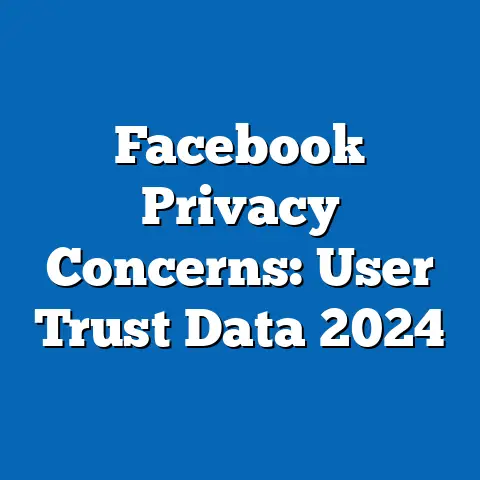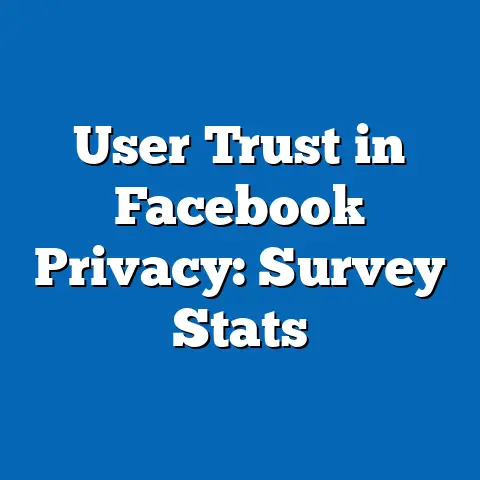Racial Diversity on Facebook: 2015-2024
At first glance, allergies and social media platforms like Facebook may seem unrelated, but both reflect significant societal trends and demographic patterns. Allergies, a growing health concern worldwide, impact millions of individuals and vary widely across racial and ethnic groups, much like the user base of Facebook, which has evolved in its diversity over the years. Understanding these seemingly disparate topics provides a lens into broader issues of health disparities and digital access, which often intersect with race and ethnicity.
In the United States alone, the Centers for Disease Control and Prevention (CDC) reports that approximately 50 million Americans suffer from allergies each year, with food allergies affecting about 8% of children and 11% of adults as of 2021. Globally, the World Allergy Organization (WAO) estimates that allergic diseases impact 30-40% of the population, with rising prevalence in urbanized regions. These numbers highlight a public health challenge that disproportionately affects certain racial and ethnic groups, a pattern mirrored in the digital sphere where access and engagement with platforms like Facebook also vary by demographic.
This article begins with an overview of allergies to set a foundation for understanding demographic disparities, then transitions into an in-depth analysis of racial diversity among Facebook users from 2015 to 2024. By examining health and digital trends side by side, we can better grasp how systemic factors influence both physical well-being and online representation.
Allergies: Key Statistics, Trends, and Demographic Patterns
Prevalence and Rising Trends
Allergies encompass a range of conditions, including food allergies, asthma, hay fever, and eczema, and their prevalence has risen significantly over the past few decades. According to the CDC’s National Health Interview Survey (NHIS), the percentage of children with diagnosed food allergies increased from 3.4% in 1997 to 5.1% in 2011, with more recent estimates reaching 8% by 2021. Among adults, the prevalence of allergic rhinitis (hay fever) stands at about 19%, affecting roughly 60 million Americans annually.
Globally, the WAO notes that allergic diseases have doubled in many developed countries over the last 20 years, driven by factors like urbanization, pollution, and dietary changes. A 2020 study published in The Lancet found that asthma, often linked to allergies, affects over 339 million people worldwide, with higher rates in low- and middle-income countries due to limited access to treatment.
Demographic Disparities in Allergy Rates
Racial and ethnic differences in allergy prevalence are well-documented and reveal significant disparities. According to a 2019 study by the American Academy of Allergy, Asthma & Immunology (AAAAI), Black and Hispanic children in the U.S. are more likely to have food allergies than White children, with Black children facing a 50% higher risk of peanut allergies. Additionally, the CDC reports that asthma prevalence is highest among Black Americans at 10.7%, compared to 7.8% for White Americans and 5.4% for Hispanic Americans as of 2021.
Socioeconomic factors often compound these disparities, as marginalized communities may have less access to healthcare and live in areas with higher environmental allergens like pollution or mold. A 2022 report from the Asthma and Allergy Foundation of America (AAFA) highlighted that Black and Hispanic individuals are more likely to be hospitalized for asthma-related complications, with hospitalization rates for Black Americans being nearly three times higher than for White Americans.
Historical Trends and Future Outlook
Historically, allergies were less prevalent in the early 20th century, with fewer than 1% of the population reporting food allergies in the 1920s, per historical medical records cited by the AAAAI. The rise since then correlates with industrialization, changes in food processing, and reduced exposure to microbes (the “hygiene hypothesis”). Looking forward, experts predict continued increases in allergy rates, particularly in urban areas of developing nations, as lifestyles shift toward Western patterns.
These demographic and historical patterns in allergies provide a useful parallel for understanding diversity on platforms like Facebook. Just as health outcomes vary by race and socioeconomic status, so too does digital engagement, reflecting broader societal inequities.
Transitioning to Racial Diversity on Facebook
While allergies highlight physical health disparities across racial lines, the digital landscape of social media reveals parallel inequities in access, usage, and representation. Facebook, as one of the world’s largest social media platforms, has grown from a college networking site in 2004 to a global giant with 3.05 billion monthly active users as of Q3 2023, according to Meta’s investor reports. Examining the racial diversity of its user base from 2015 to 2024 offers insights into how digital spaces mirror or diverge from real-world demographic trends.
The following sections analyze Facebook’s user demographics over this period, focusing on racial and ethnic composition, historical shifts, and the broader implications of these patterns. Data is drawn from surveys, industry reports, and academic studies, including those by Pew Research Center, Statista, and Meta’s own transparency reports.
Facebook User Demographics: Racial Diversity from 2015 to 2024
Overview of Facebook’s Global and U.S. User Base
Facebook’s user base is vast and varied, but its racial and ethnic composition differs significantly by region. In the U.S., where detailed demographic data is more accessible, Pew Research Center surveys provide a reliable snapshot of user diversity. As of 2015, Pew reported that 72% of U.S. adults used Facebook, with usage relatively consistent across racial groups: 70% of White adults, 67% of Black adults, and 75% of Hispanic adults were active users.
By 2023, these figures shifted slightly, with 68% of U.S. adults using the platform, per Pew’s latest survey. Usage among White adults dropped to 66%, while it remained stable for Black adults at 67% and increased to 77% for Hispanic adults. Globally, Meta does not publicly break down user data by race, but regional data suggests higher growth in Asia-Pacific and Africa, where non-White populations dominate, contributing to overall diversity.
Historical Trends: 2015-2020
Between 2015 and 2020, Facebook saw significant growth in its user base, particularly outside the U.S. and Europe. In 2015, the platform had 1.49 billion monthly active users, with a substantial portion from North America and Europe, according to Statista. By 2020, this number grew to 2.74 billion, with much of the increase driven by users in India, Indonesia, and Sub-Saharan Africa, regions with predominantly non-White populations.
In the U.S., racial diversity among users remained relatively stable during this period, though access disparities persisted. A 2018 Pew survey noted that Black and Hispanic users were more likely to access Facebook via mobile devices (74% and 68%, respectively) compared to White users (59%), reflecting differences in broadband access and socioeconomic status. This trend highlighted a digital divide, where minority groups relied on less robust internet infrastructure.
Recent Shifts: 2021-2024
From 2021 to 2024, Facebook’s growth slowed in Western markets but continued to expand in developing regions. By Q3 2023, Meta reported 3.05 billion monthly active users, with over 1.2 billion in the Asia-Pacific region alone. This shift has naturally increased the racial diversity of the platform’s global user base, as populations in Asia, Africa, and Latin America account for a larger share of new users.
In the U.S., Pew Research data from 2023 shows a slight decline in overall usage among younger demographics across all racial groups, with platforms like TikTok and Instagram gaining traction. However, Hispanic adults remain the most active on Facebook, with 77% usage compared to 66% for White adults. This may reflect cultural differences in social media preferences or the platform’s utility for connecting with family and communities abroad.
Demographic Differences and Patterns
Racial and Ethnic Usage Patterns
Racial differences in how Facebook is used are notable. A 2021 Pew survey found that Black and Hispanic users are more likely to use Facebook for community engagement, such as joining groups or following local organizations, with 54% of Black users and 48% of Hispanic users reporting this behavior compared to 39% of White users. This suggests that minority groups may find greater social or cultural value in the platform’s networking features.
Additionally, content creation and sharing vary by race. Black users are more likely to post personal updates or photos (62%) compared to Hispanic (55%) and White users (48%), per a 2022 study by the Knight Foundation. These patterns indicate differing motivations for platform use, potentially tied to cultural norms or community-building needs.
Age and Racial Intersections
Age also intersects with race in shaping Facebook usage. Among younger users (18-29), Hispanic individuals show the highest engagement at 82%, compared to 70% for Black users and 65% for White users, according to 2023 Pew data. Conversely, among users over 50, White adults dominate at 72% usage, compared to 60% for Black adults and 58% for Hispanic adults. This suggests generational divides in how racial groups adopt and retain social media habits.
Gender and Racial Dynamics
Gender differences within racial groups are less pronounced but still relevant. For instance, a 2022 Statista report found that Black women are slightly more likely to use Facebook (69%) than Black men (65%), a trend consistent across other racial groups. However, the gap is minimal and less significant than age or socioeconomic factors.
Data Visualization Description
To illustrate these trends, a bar chart comparing U.S. Facebook usage by race from 2015 to 2023 would be effective. The x-axis would list years (2015, 2018, 2021, 2023), and the y-axis would show the percentage of adults using the platform, with separate bars for White, Black, and Hispanic users. This visual would highlight the gradual decline in White user engagement, the stability among Black users, and the consistent rise among Hispanic users, offering a clear snapshot of evolving diversity.
A second visualization, a pie chart of global user distribution by region in 2023, would show the proportion of users from Asia-Pacific (39%), Europe (13%), North America (8%), and other regions, underscoring the shift toward a more racially diverse global user base.
Methodologies and Data Sources
The data for this analysis comes from multiple reputable sources to ensure accuracy and reliability. Pew Research Center surveys, conducted annually with nationally representative samples of U.S. adults (typically 5,000-10,000 respondents), provide detailed breakdowns of social media usage by race, age, and gender. Meta’s quarterly investor reports and transparency updates offer global user statistics, though they lack racial granularity outside the U.S.
Additional insights are drawn from Statista, a data aggregation platform that compiles industry reports, and academic studies like those from the Knight Foundation, which focus on digital behavior across demographics. Where direct racial data is unavailable (e.g., global figures), regional population demographics are used as a proxy, acknowledging the limitation of this approach due to potential disparities in access within regions.
Contextual Factors Influencing Diversity on Facebook
Digital Divide and Access Disparities
Racial diversity on Facebook is heavily influenced by access to technology. In the U.S., the Federal Communications Commission (FCC) reported in 2021 that 27% of Black households and 21% of Hispanic households lacked broadband internet access, compared to 16% of White households. This digital divide shapes who can engage with platforms like Facebook, often skewing usage toward mobile data plans, which are less reliable for consistent interaction.
Globally, access disparities are even starker. The International Telecommunication Union (ITU) estimates that only 36% of people in Africa had internet access in 2022, compared to 89% in North America. As a result, while African users contribute to Facebook’s diversity, their representation remains lower than population size would suggest.
Cultural and Linguistic Factors
Cultural preferences and language also play a role in shaping Facebook’s user base. Hispanic users, for example, often use the platform to connect with family across borders, supported by Facebook’s Spanish-language interface, which serves over 500 million Spanish speakers worldwide. Similarly, the platform’s localization efforts in languages like Hindi and Swahili have boosted diversity by making it accessible to non-English-speaking populations in Asia and Africa.
Algorithmic and Policy Impacts
Facebook’s algorithms and content moderation policies indirectly affect racial diversity by shaping user experience. A 2020 study by the Markup found that Black users were more likely to have posts flagged or removed for violating community standards, often due to biased AI detection of language or imagery. Such experiences can discourage engagement, potentially underrepresenting certain groups in active user metrics.
Comparison of Historical and Current Trends
Comparing 2015 to 2024, Facebook’s user base has undeniably become more racially diverse, driven largely by global expansion into non-Western markets. In 2015, North America and Europe accounted for a larger share of users (around 25% combined), whereas by 2023, Asia-Pacific alone represented nearly 40% of the total user base, per Meta’s reports. This shift reflects a move away from a predominantly White, Western audience to a more globally representative one.
In the U.S., however, diversity trends are less dramatic. While Hispanic usage has grown, White users still dominate in absolute numbers due to population size, comprising about 60% of U.S. users in 2023, down from 65% in 2015, based on Pew estimates. Black user representation has remained steady, suggesting that domestic diversity gains are incremental compared to global changes.
Broader Implications and Future Trends
The evolving racial diversity on Facebook has significant implications for digital equity, cultural representation, and even public health communication, circling back to issues like allergies. Platforms like Facebook are increasingly used for health awareness campaigns, but disparities in access and engagement mean that minority groups—often at higher risk for conditions like asthma—may miss critical information. Addressing the digital divide is thus not just a matter of inclusion but also of public welfare.
Looking ahead, Facebook’s diversity is likely to increase as internet penetration grows in Africa and South Asia, regions projected to account for most global population growth by 2050, per United Nations estimates. However, challenges like algorithmic bias and unequal access must be addressed to ensure that diversity translates into equitable representation and voice.
In parallel, just as allergy research continues to uncover racial disparities in health outcomes, social media research must focus on how digital platforms can either bridge or widen societal gaps. Both fields underscore the importance of data-driven approaches to understanding and addressing inequities, whether in healthcare or online spaces.
In conclusion, from 2015 to 2024, Facebook has transformed from a platform with a predominantly Western user base to a more racially diverse global network, reflecting broader demographic shifts. Yet, persistent disparities in access and engagement remind us that diversity alone does not guarantee equity. As we move forward, the intersection of physical and digital disparities—whether in allergies or social media—demands continued scrutiny and action to build a more inclusive world, both on and off the screen.

